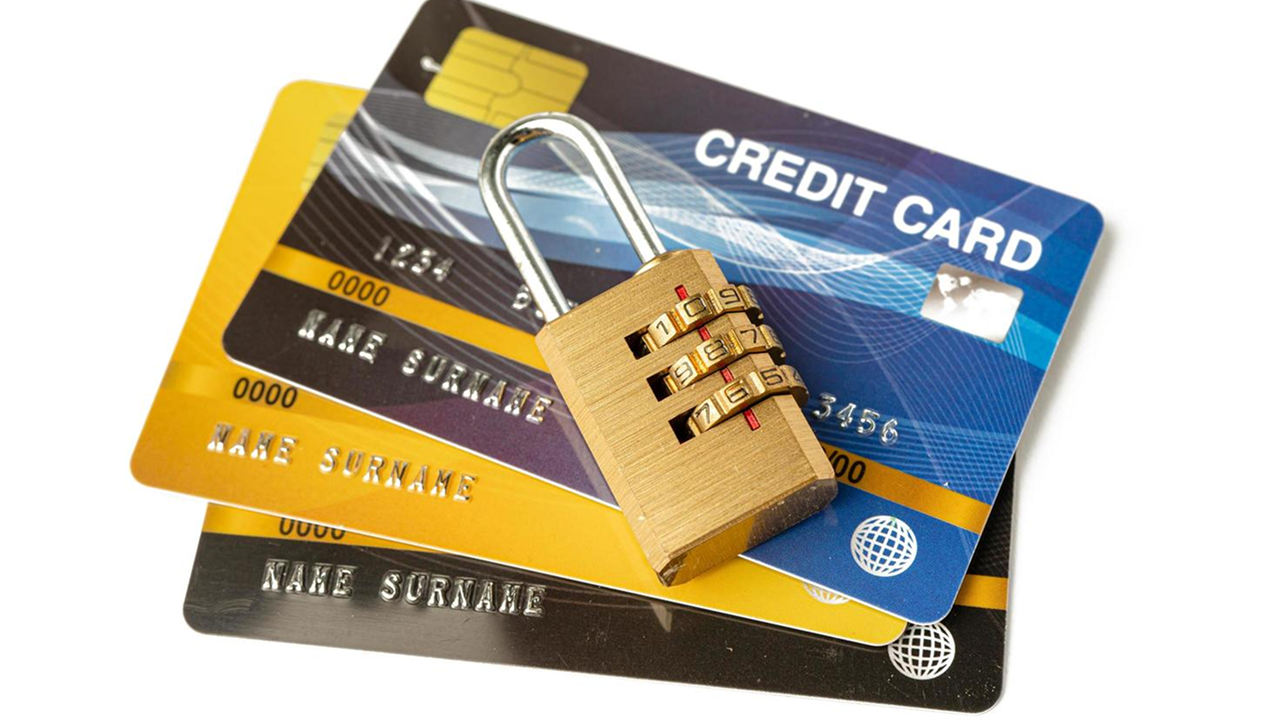
By Deborah Stewart May 12, 2025
Luxury retail is not just about the products. It is about the entire experience. Customers who invest in high-end fashion, fine jewelry, designer accessories, or luxury watches expect more than a transaction. They expect a relationship built on quality, service, and most importantly, trust.
In today’s digital economy, where purchases may happen in-store, online, or through a mobile device, payment is one of the most critical touchpoints in that relationship. The way a brand handles a customer’s financial data speaks volumes about its credibility and commitment to excellence. For luxury retailers, implementing secure payment solutions is no longer a technical formality. It is a foundational element of brand integrity.
When customers feel safe during a transaction, they are more likely to buy, return, and recommend. When security fails or appears insufficient, it can shatter trust in a single moment. This article explores how secure payment solutions help luxury retailers build and maintain that trust, improve customer loyalty, and strengthen their competitive edge.
The High Stakes of Payment in Luxury Commerce
In the luxury market, average transaction values are significantly higher than in traditional retail. This means that each payment carries a greater risk and a greater expectation for smooth execution. A glitch at the point of sale, a delayed authorization, or an unclear charge can damage the customer experience and deter future purchases.
Customers in this segment are also more likely to use multiple channels for their purchases. They might view a product in-store, complete the purchase online, or vice versa. Secure, unified payment experiences across all channels are essential to maintaining consistency and confidence.
Luxury shoppers are discerning. They do not simply buy a product. They buy the assurance that every detail, including payment, will be handled with care. Secure payment systems support this expectation by preventing fraud, ensuring privacy, and delivering seamless, professional transactions.
Understanding the Core Components of Secure Payment Systems
A secure payment system consists of several critical components. These elements work together to protect the transaction from the moment a customer initiates payment to the moment funds are settled into the retailer’s account.
One of the most important components is encryption. This technology converts payment data into a coded format that cannot be read by unauthorized parties. Whether a customer uses a credit card in-store or enters payment details online, encryption ensures that data is transmitted safely.
Tokenization is another essential feature. It replaces sensitive information, such as card numbers, with a unique identifier or token. This means that even if the token is intercepted, it cannot be used to complete a transaction.
Fraud detection tools add another layer of protection. These systems use artificial intelligence and machine learning to detect suspicious patterns in real time. If a transaction appears to be out of the ordinary, the system can flag it, request additional verification, or block it entirely.
Finally, compliance with standards such as PCI DSS is critical. These standards set the baseline for how payment data should be stored, processed, and transmitted. Retailers who follow these protocols demonstrate their commitment to data protection and legal compliance.
The Role of Payment Security in Customer Trust

Trust is central to the luxury experience. Customers who spend thousands or even tens of thousands of dollars expect their transactions to be secure. They also expect discretion, speed, and professionalism. Payment is the final step in the buying journey and often leaves the most lasting impression.
Secure payment systems build trust by reducing uncertainty. When customers see that a retailer uses modern security protocols, branded payment gateways, and recognizable verification processes, they feel more confident completing the purchase.
Trust is also reinforced when transactions happen without error or delay. If a customer sees a pending charge that they do not understand or experiences a payment failure, it can cause anxiety. A smooth and secure checkout experience reassures them that the retailer is competent and trustworthy.
In contrast, security lapses can lead to irreversible damage. A data breach, even if minor, can drive customers away and attract negative media attention. In luxury retail, where reputation is everything, security must be treated as a non-negotiable part of customer experience.
In-Store and Online: Providing Seamless Security Across Channels
Luxury retailers operate in both physical and digital environments. Customers may browse online, reserve in-store, or make high-value purchases entirely through a mobile app. Regardless of how they shop, the level of security must be consistent.
In-store security includes using EMV chip terminals, supporting contactless payments, and training staff to handle card transactions securely. These terminals should also support modern mobile wallets like Apple Pay and Google Pay, which add biometric authentication layers for enhanced safety.
Online security requires strong digital infrastructure. This includes using HTTPS for all transactions, integrating secure checkout solutions, and offering two-factor authentication for account logins. Retailers should also use fraud detection tools that analyze user behavior, such as device location and purchase history, to flag anomalies.
Omnichannel payment platforms that unify customer data across all points of interaction are particularly valuable. These platforms allow for single customer profiles, linked purchases, and centralized security management. This ensures that whether a customer shops in Paris or logs in from New York, their experience and their data are equally protected.
Meeting the Expectations of Global Luxury Shoppers
Many luxury brands serve an international customer base. This adds complexity to payment processing and security. Cross-border payments involve currency conversion, tax implications, and regional compliance requirements. Each of these elements introduces new risks and responsibilities.
Secure global payment solutions help manage these risks by offering localized payment options, multi-currency support, and international fraud protection. For example, a European customer may prefer to use a local digital wallet or payment method that is unfamiliar to a retailer based in Asia. Supporting these preferences securely enhances the shopping experience and expands the brand’s reach.
Retailers must also ensure compliance with data privacy regulations in different jurisdictions, such as GDPR in Europe or CCPA in California. Using payment providers that are equipped for international compliance reduces legal risk and supports global expansion.
A secure and culturally aware payment system builds trust by showing customers that the brand understands their needs, no matter where they live or shop.
Handling High-Value Transactions with Care

High-value transactions require special handling. When a customer makes a large purchase, additional verification may be necessary to prevent fraud. However, these steps must be managed carefully to avoid disrupting the luxury experience.
One approach is to use smart verification that operates silently in the background. Fraud detection systems can evaluate risk based on hundreds of data points without requiring customer input. If additional verification is needed, the system can prompt for biometric confirmation or send a one-time passcode.
Another approach is pre-verification for loyal customers. Returning buyers can be verified in advance, allowing for faster checkouts. Retailers can also offer secure payment links for personalized purchases, allowing high-value customers to complete transactions in a trusted environment.
Staff should be trained to handle large transactions discreetly. If identity verification is needed in-store, it should be done with professionalism and care. The goal is to make the customer feel protected, not interrogated.
By handling high-value payments with elegance and attention to detail, retailers reinforce their brand values and show customers that their investment is in safe hands.
Reducing Chargebacks and Disputes Through Transparency
Chargebacks can be a significant issue in luxury retail. When customers dispute charges with their bank, the funds are withdrawn and the retailer must provide evidence to retain the payment. In the case of high-value items, this can result in substantial losses.
Secure payment systems help reduce chargebacks by ensuring that every transaction is well-documented and clearly authorized. Digital receipts, signature capture, and delivery confirmation all serve as proof that the transaction was valid.
Offering clear return and refund policies also reduces misunderstandings. When customers know their rights and see that the retailer is transparent, they are less likely to dispute charges. Communication during and after the sale is key.
Some payment systems include dispute management tools that help retailers respond quickly to chargebacks. These systems organize transaction data, streamline communication with banks, and improve the chances of winning disputes.
Security is not only about stopping fraud. It is also about giving both parties the tools they need to resolve concerns quickly and fairly.
Elevating Brand Image Through Secure Innovation
Security is not just functional. It is part of brand expression. Luxury retailers can use secure payment solutions to elevate their image and demonstrate that they are modern, responsible, and customer-centric.
For example, offering biometric authentication at checkout shows a commitment to innovation and personalization. Using branded payment portals or custom invoices adds an extra touch of professionalism.
Even the way payment confirmations are delivered matters. A secure yet stylish email receipt, a personal message from a sales associate, or a thank-you note sent digitally can reinforce the brand’s voice.
Security should not feel cold or impersonal. When integrated thoughtfully, it becomes part of the luxury experience. It tells the customer that the brand values their trust and is willing to invest in protecting it.
Choosing the Right Payment Technology Partner

Selecting the right payment partner is a strategic decision. Luxury retailers should work with providers who understand the industry’s specific needs and can offer tailored solutions. Not all payment processors are equipped to handle large transactions, global customers, or high-value risk.
Retailers should look for partners that offer scalability, advanced fraud protection, and omnichannel integration. Support for global currencies, localized payment methods, and compliance management are also essential.
Reputation matters. Working with trusted technology providers gives customers additional peace of mind. If they recognize the payment gateway or see familiar trust badges, they are more likely to proceed with confidence.
The payment partner should also offer responsive support. When issues arise, retailers need a partner who can act quickly, resolve problems, and maintain business continuity.
Building a Culture of Security Within the Organization
Technology alone cannot guarantee secure payments. A secure environment also requires a culture of awareness and responsibility within the organization.
Employees should be trained regularly on payment security practices. This includes handling payment data, recognizing fraud attempts, and responding to incidents. Frontline staff, in particular, must understand the importance of professionalism and discretion during the checkout process.
Internal systems should be reviewed periodically for compliance and performance. Security audits, risk assessments, and system updates help maintain a strong defense against emerging threats.
A secure culture also includes clear policies and accountability. Every team member should know their role in protecting customer data and upholding the brand’s reputation.
When security becomes part of the company’s values, it is reflected in every interaction and decision.
Conclusion: Trust Begins with Secure Transactions
In luxury retail, every detail matters. From the stitching on a handbag to the lighting in a boutique, each element contributes to how the customer feels about the brand. Payment security is no different. It is a silent but powerful part of the luxury experience.
Secure payment solutions do more than protect revenue. They build trust, reinforce brand identity, and create a foundation for lasting customer relationships. In an industry where perception is reality, retailers cannot afford to treat security as an afterthought.
By investing in secure, seamless, and customer-focused payment systems, luxury brands show that they take their customers seriously. They prove that trust is not just expected. It is earned, protected, and honored with every transaction.